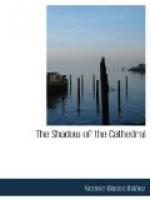“And amidst all this the innumerable convents, masters of more than half the country and the sole possessors of wealth, showed their charity by distributing soup to those who had strength to fetch it, and by founding asylums and hospitals, where the people died of misery though they were certain of reaching heaven. The ancient manufactures had all disappeared. Segovia, so famous for its cloth, that had employed over 40,000 persons in its manufacture, only held 15,000 inhabitants, and these had so completely forgotten the art of weaving wool that when Philip V. wished to re-establish the industry, he was obliged to import German weavers.
“And it was the same thing in Seville, in Valencia, and in Medina del Campo, so famous for their fairs and their manufactures,” continued Gabriel. “Seville which in the fifteenth century had 16,000 silk weavers, at the end of the seventeenth could only produce 65. Though it is true in exchange its Cathedral clergy numbered 117 canons, and it had 78 convents, with more than 4,000 friars and 14,000 priests in the diocese. And Toledo? At the close of the fifteenth century it employed 50,000 artisans in its silk and wool weaving and in its factory of arms, to say nothing of curriers, silversmiths, glovers, and jewellers; at the end of the seventeenth century it had hardly 15,000 inhabitants. Everything was decayed, everything was ruined; twenty-five houses belonging to illustrious families had passed into the hands of the convents, and the only rich people in the town were the friars, the archbishop and the Cathedral. Spain was so exhausted at the end of the Austrian rule that she saw herself nearly divided among the different powers of Europe, like Poland, another Catholic country like ours. The quarrels among the kings were the only thing that saved her.”
“If those times were so bad, Gabriel,” said Silver Stick, “how was it the Spaniards showed such unanimity? How was it there were no ‘pronunciamientos’ and risings in these deplorable times?”




